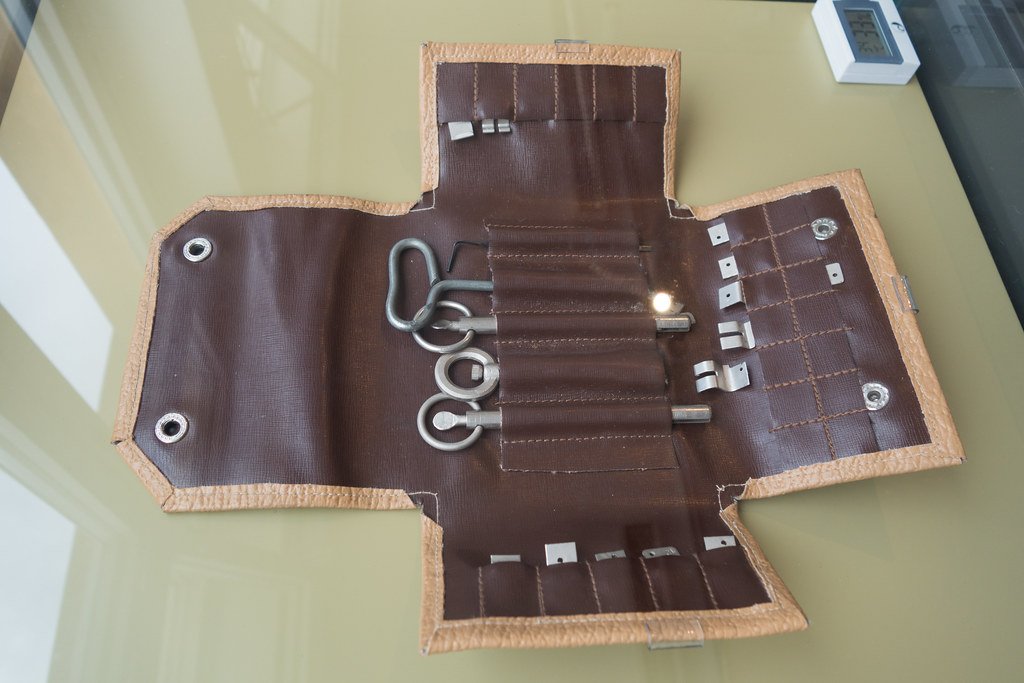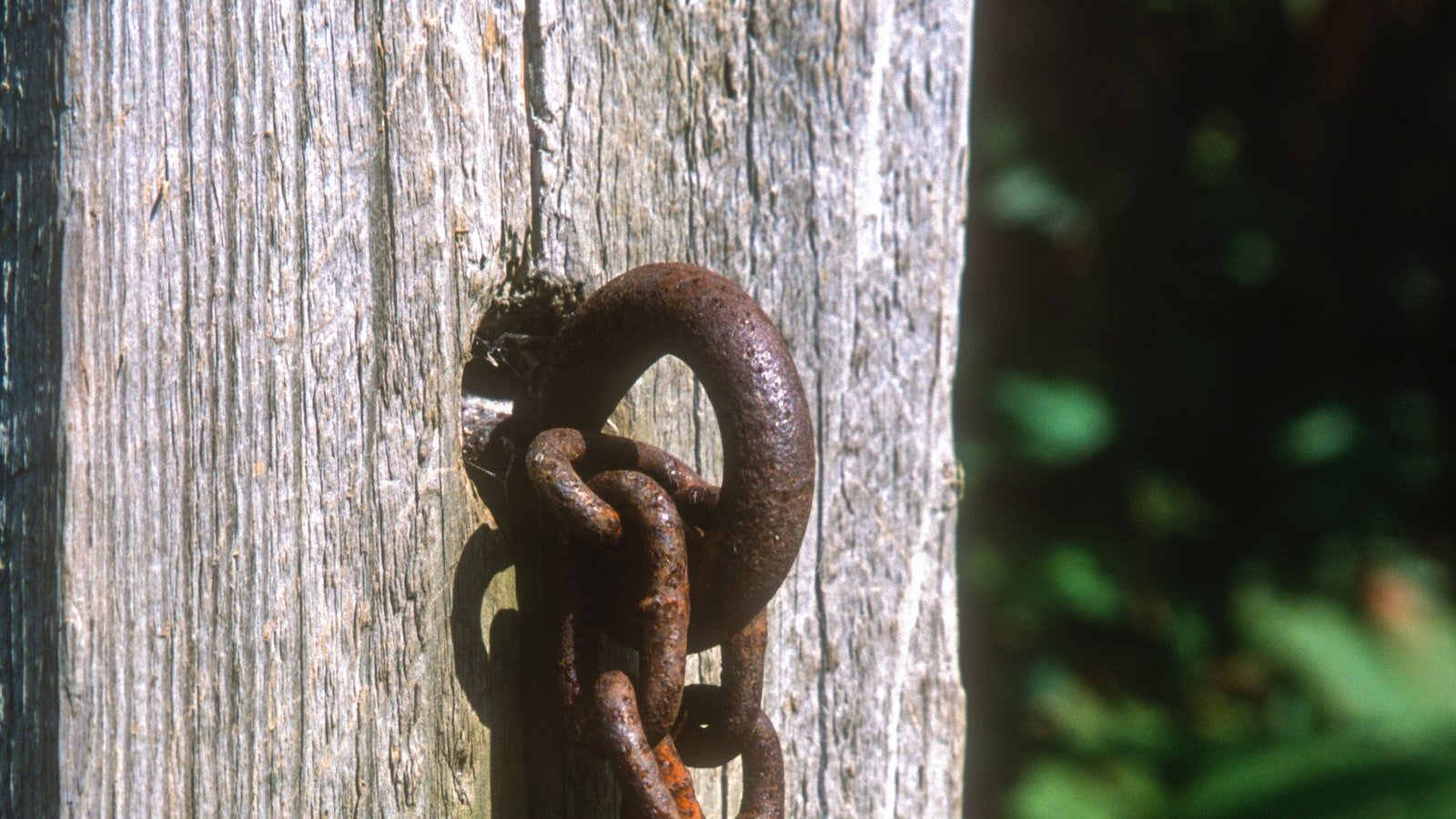Have you ever found yourself in a frustrating situation, locked out of your own home, desperately searching for a locksmith or a spare key? Well, what if we told you there was a way to eliminate this inconvenience altogether? Welcome to the fascinating world of lock picking, where the power to unlock your own doors lies in the palm of your hand. Today, we’re delving into the art of crafting your very own lock picking tools, empowering you with the skills to conquer any locked barrier that stands in your way. So, grab your toolbox and prepare to discover the secrets that lie within the realm of lock manipulation and the thrill of creating your own unlocking devices. Get ready to join the ranks of the resourceful and the intrepid, as we unravel the enchanting world of DIY lock picking tools.
Table of Contents
- Planning Your Lock Picking Toolbox
- Choosing the Right Materials for Your DIY Lock Picks
- Essential Tools and Techniques for Crafting Lock Picking Instruments
- Fine-tuning Your Homemade Lock Picks: Tips and Tricks from Experts
- Exploring Advanced Lock Picking Tools and Techniques
- Q&A
- Future Outlook

Planning Your Lock Picking Toolbox
Once you’ve decided to embark on the exciting journey of lock picking, it’s crucial to gather the right tools for the job. Creating your lock picking toolbox requires careful planning to ensure you have everything you need to tackle various locks. To help you get started, here are some essential items to consider:
1. Lock Picks: The backbone of your toolbox, lock picks come in various shapes, sizes, and designs to suit different locks. From hooks and diamonds to rakes and tension wrenches, make sure you have a diverse selection to handle any challenge that comes your way.
2. Tension Wrenches: These tools are vital for applying tension to the lock cylinder, allowing you to manipulate the pins successfully. Tension wrenches come in different styles, such as L- and Z-shaped, providing options for different lock mechanisms.
3. Extractors: In case you encounter broken keys or jammed locks, having extractors can be a lifesaver. These specialized tools help you remove broken pieces stuck inside a lock, ensuring a clean and smooth unlocking process.
4. Practice Locks: To fine-tune your skills, investing in quality practice locks is essential. These dummy locks allow you to train without the risk of damaging real ones. Consider getting both single-pin and multiple-pin practice locks to practice different techniques.
Remember, acquiring a lock picking toolbox requires patience and research. Opt for high-quality tools from reputable sources to ensure durability and reliability. Experiment with different tools and techniques to find what works best for you. With practice, dedication, and the right toolbox, you’ll be well on your way to becoming a skilled lock picker.
Choosing the Right Materials for Your DIY Lock Picks
When it comes to picking locks as a DIY enthusiast, selecting the right materials is crucial for success. Here are some key considerations to keep in mind:
- Wire: Use high-quality steel wire that is both thin and sturdy. A diameter of around 0.025 inches or smaller is ideal for most lock picking tasks. Steer clear of brittle or easily bendable wire, as it won’t provide the necessary control and precision.
- Handles: Opt for handles that offer a comfortable grip. Look for materials like rubber or textured plastic to ensure a secure hold without compromising dexterity.
- File: A good file is essential for shaping and refining your lock picks. Choose a fine-grit file that will allow you to achieve smooth edges and contours. This will significantly improve your lock picking experience.
Remember, proper materials are the foundation of effective lock picking. Take your time in selecting the right ones and don’t hesitate to experiment to find what works best for you. By choosing high-quality wire, comfortable handles, and a reliable file, you’ll strengthen your chances of unlocking the mysteries hidden behind those locked doors.

Essential Tools and Techniques for Crafting Lock Picking Instruments
Lock picking is an art that requires both skill and the right tools. To craft your own lock picking instruments, you’ll need a few essential tools and techniques. Here are some key tools and techniques to get you started on your lock picking journey:
1. Materials: Begin by gathering the necessary materials for crafting your lock picking instruments. These include thin and sturdy metal rods, typically made from stainless steel or titanium. You can find these materials at your local hardware store or online.
2. Shaping: Once you have your chosen metal rods, it’s time to shape them into the desired lock picking instruments. Use a vice grip to hold the rod securely in place while using a file or grinder to shape it. Remember to file the edges carefully, ensuring they are smooth and free from any sharp edges that could damage the lock.
3. Types of Picks: There are various types of lock picks you can create, each with its own specific purpose. These include hooks, rakes, and diamond picks. Hooks are perfect for single pin picking, while rakes are useful for quickly manipulating multiple pins. Diamond picks, on the other hand, work well for fine-tuning and precision picking.
4. Testing and Refining: Once you’ve crafted your lock picks, it’s important to test and refine them. Use a practice lock to familiarize yourself with their abilities and make any necessary adjustments. Experiment with different tension levels and techniques to become more proficient in picking locks.
Remember, lock picking should only be done for legal and ethical purposes, such as learning and improving security systems. So, grab your tools, get creative, and explore the fascinating world of crafting lock picking instruments!
Fine-tuning Your Homemade Lock Picks: Tips and Tricks from Experts
When it comes to lock picking, having finely crafted tools can make all the difference. Here are a few tips and tricks from the experts to help you fine-tune your homemade lock picks:
- Material Matters: Consider using high-quality steel or hardened carbon steel to ensure durability and precision in your lock picks. These materials offer superior strength and resistance to wear, increasing the lifespan of your tools.
- Mastering the Shape: Experiment with different shapes and styles of lock picks to find what works best for you. From hooks and rakes to diamonds and balls, each shape offers its own advantages depending on the type of lock you’re tackling.
- Perfecting the Angles: Pay close attention to the angles and bevels on your lock picks. Small adjustments to the tip angle or the thickness of the pick can hugely impact your success rate. Take the time to refine these details and you’ll reap the rewards in your lock picking endeavors.
- Embrace Resistance: While sanding or filing down your homemade lock picks, aim for a balance between rigidity and flexibility. Having a bit of resistance in your pick can enhance your tactile feedback, allowing you to sense the feedback from the lock’s pins more accurately.
- Consistency is Key: Once you’ve found the perfect combination of materials, shapes, and angles, strive for consistency. Ensure all your picks are uniform in size, finish, and design. This will create muscle memory and improve your overall proficiency.
Remember, the art of lock picking requires practice and patience. By incorporating these expert tips and tricks into your homemade lock picks, you’ll be well on your way to becoming a master locksmith!
Exploring Advanced Lock Picking Tools and Techniques
When it comes to the world of lock picking, enthusiasts are always searching for new and innovative tools and techniques to improve their skills. Advanced lock picking tools have emerged in recent years, allowing locksmiths and hobbyists to overcome even the most challenging locks.
1. Electric Pick Guns: These powerful tools are a game-changer for lock pickers. They use rapid vibrations to manipulate the lock’s pins, significantly speeding up the process. Electric pick guns are particularly useful for experienced lock pickers looking to save time on simple locks.
2. Tubular Lock Picks: Designed specifically for tubular locks, these tools utilize a circular picking motion to manipulate the pins within the lock. Their unique shape allows for precise control and quick access to tubular locks, making them essential for anyone dealing with this type of lock regularly.
3. Bump Keys: Bump keys have been around for a while, but they remain a reliable and effective tool. These specially crafted keys can be used to open certain types of locks by manipulating the pins. Though bump keys require practice and skill to master, they offer a quick solution for certain lock picking situations.
As lock picking enthusiasts continue to push the boundaries of their craft, advanced tools and techniques continue to evolve. It’s important to remember that lock picking should only be practiced legally and ethically, such as by locksmiths or individuals with proper authorization.
Q&A
How can I make my own lock picking tools?
To make your own lock picking tools, you can start by repurposing everyday household items like paper clips, bobby pins, or even dental picks. With a little creativity and some basic shaping and bending techniques, you can create functional lock picking tools at home.
Why would I want to make my own lock picking tools?
There are various reasons why someone might want to make their own lock picking tools. Whether you’re curious about the mechanics of locks, want to enhance your skills as a locksmith, or simply enjoy the challenge of DIY projects, making your own lock picking tools can be a rewarding and educational endeavor.
Is it legal to make and possess lock picking tools?
In many jurisdictions, it is legal to make and possess lock picking tools as long as you have lawful authorization to do so. However, it’s crucial to familiarize yourself with your local laws and regulations regarding lock picking tools before engaging in any activities related to lock picking, as laws can vary depending on your location.
What are some common materials that can be used to make lock picking tools?
Common materials that can be used to make lock picking tools include paper clips, bobby pins, wires, small screwdrivers, dental picks, and tension wrenches. These easily accessible household items can be shaped and modified to serve their purpose in lock picking.
Are homemade lock picking tools as effective as commercially available ones?
While commercially available lock picking tools are often more refined and specialized, homemade lock picking tools can still be effective if properly crafted and used with skill. Making your own tools allows for customization and a deeper understanding of the mechanics involved, but it’s important to remember that successful lock picking relies on technique and practice rather than solely on the quality of the tools.
Future Outlook
In a world where locks provide the illusion of impenetrable security, few dare to challenge their authority. But for the curious minds, the thrill of unraveling mysteries takes precedence over societal norms. In our journey of unlocking the secrets behind locks, we have explored various methods and techniques. Today, we embarked on a daring adventure to create our very own lock picking tools.
As we delved into this uncharted territory, our minds became a canvas for innovation. With a pinch of resourcefulness and a dash of imagination, we discovered that the power to create our own tools lied within our grasp. Armed with ingenuity and a burning desire to understand the mechanisms that kept locks at bay, we ventured forth.
Crafting lock picking tools is not simply a means to an end, but an art form in itself. We found ourselves lost in a world of endless possibilities, where ordinary objects transformed into extraordinary devices of liberation. With each bend of a paperclip and twist of a bobby pin, we felt the thrill of creation coursing through our veins.
The process of fashioning these unassuming tools required patience, precision, and a dash of trial and error. Each tool, born from our hands, carried a piece of our dedication and enthusiasm, forging a connection between craftsman and instrument. Hours turned into days as we honed our skills, perfecting the delicate art of lock picking.
But let it be known that with the power to unlock comes great responsibility. We do not endorse illegal activities or encourage the use of lock picking tools for nefarious purposes. Instead, let our journey inspire you to explore the boundless depths of knowledge, to challenge preconceived notions, and to embrace the wonders of the unknown.
As we bid farewell to the realm of homemade lock picking tools, we are filled with a sense of accomplishment. Not only have we gained insight into the intricate world of locks, but we have also discovered the thrill of personal invention. Our DIY tools have become tangible proof that with determination and a touch of creativity, we can shape our own destiny.
So, dear readers, let us part ways knowing that the power to unlock lies not only within the keys we possess but within our hearts and minds. As we leave you with a twinkle in our eyes, remember to harness your curiosity, challenge the status quo, and embrace the art of invention. For it is through such endeavors that we not only unlock the mysteries of the physical world but unlock the hidden potentials within ourselves.
As an affiliate, my content may feature links to products I personally use and recommend. By taking action, like subscribing or making a purchase, you’ll be supporting my work and fueling my taco cravings at the same time. Win-win, right?
Want to read more? Check out our Affiliate Disclosure page.